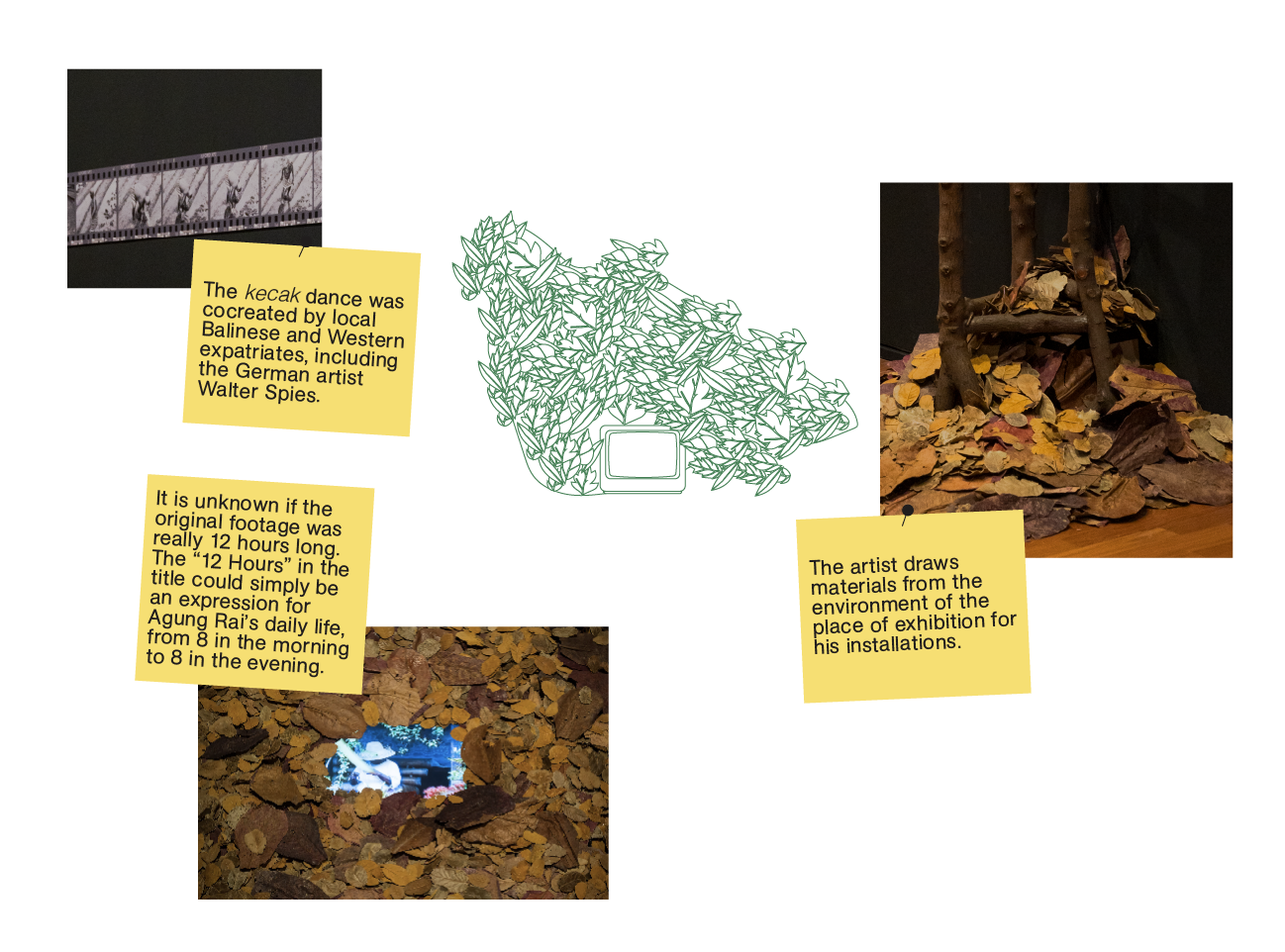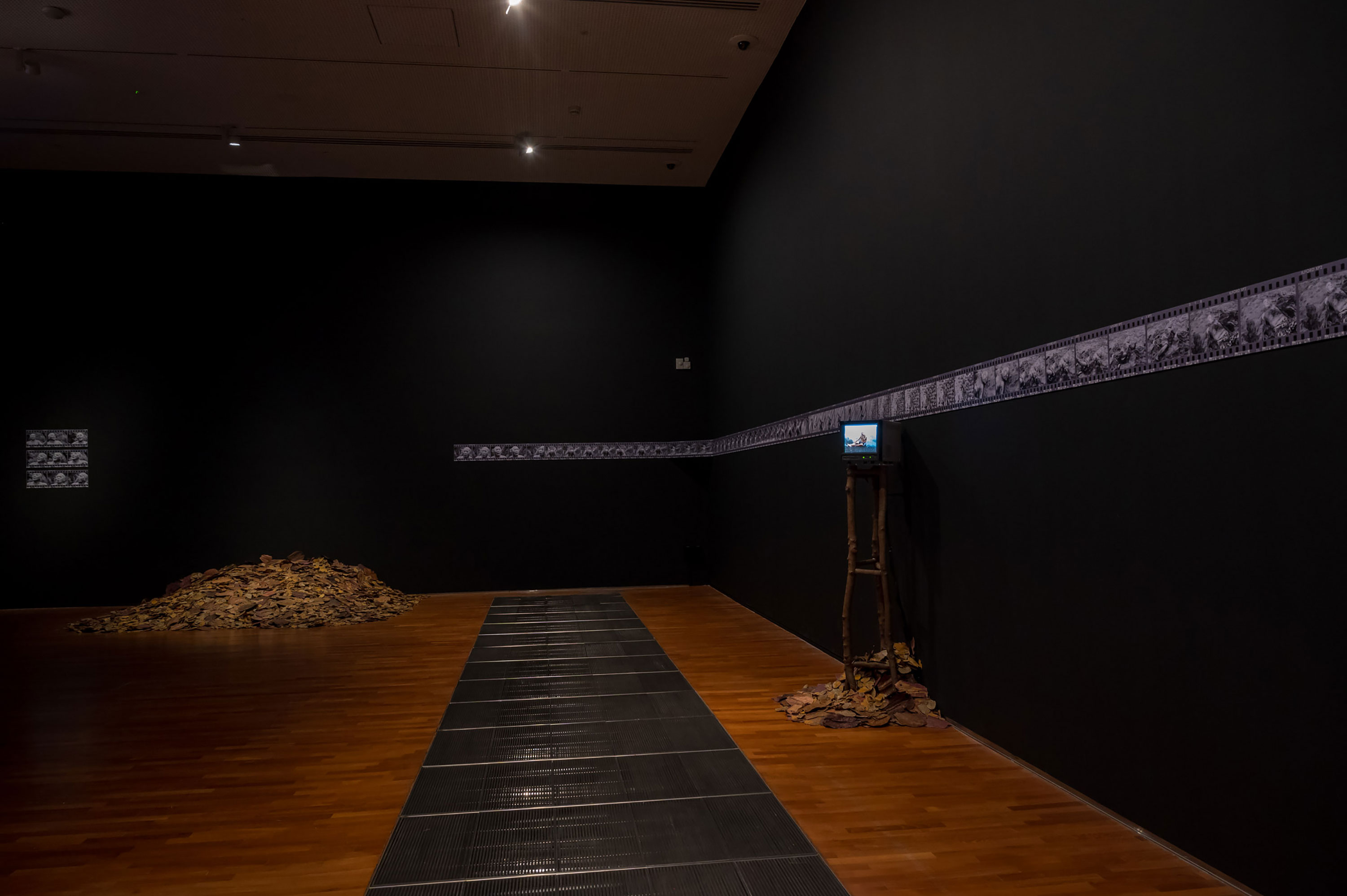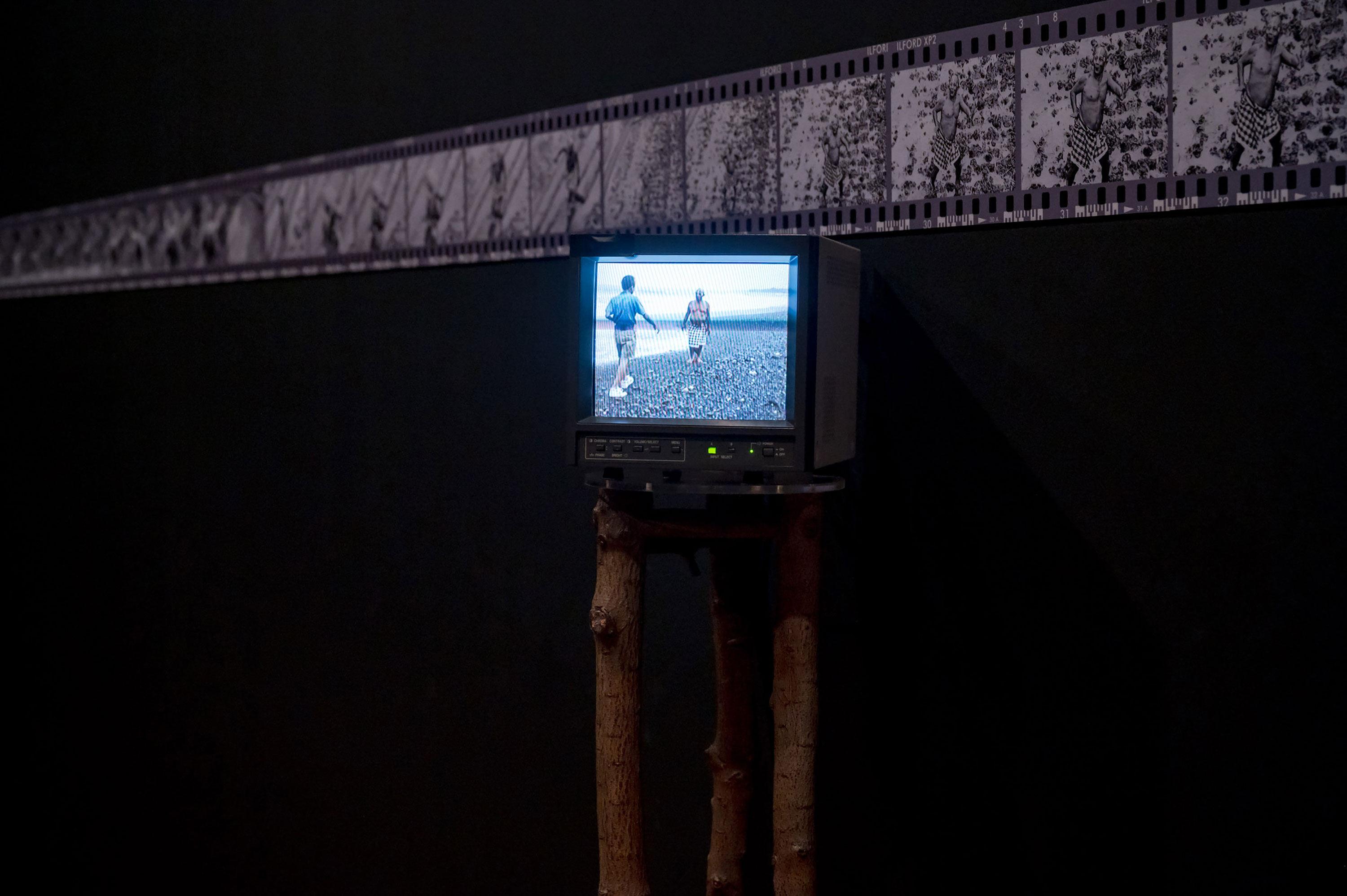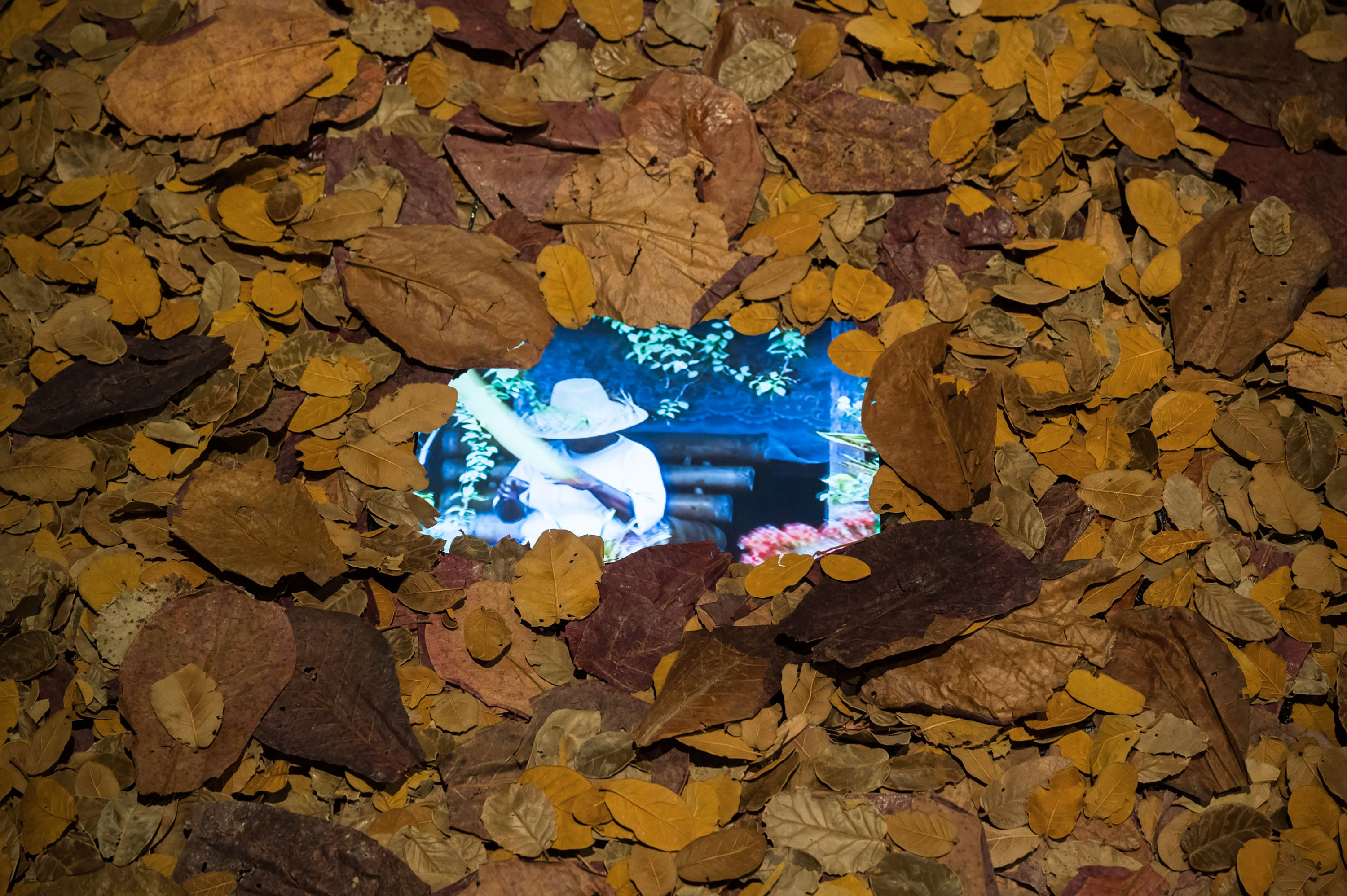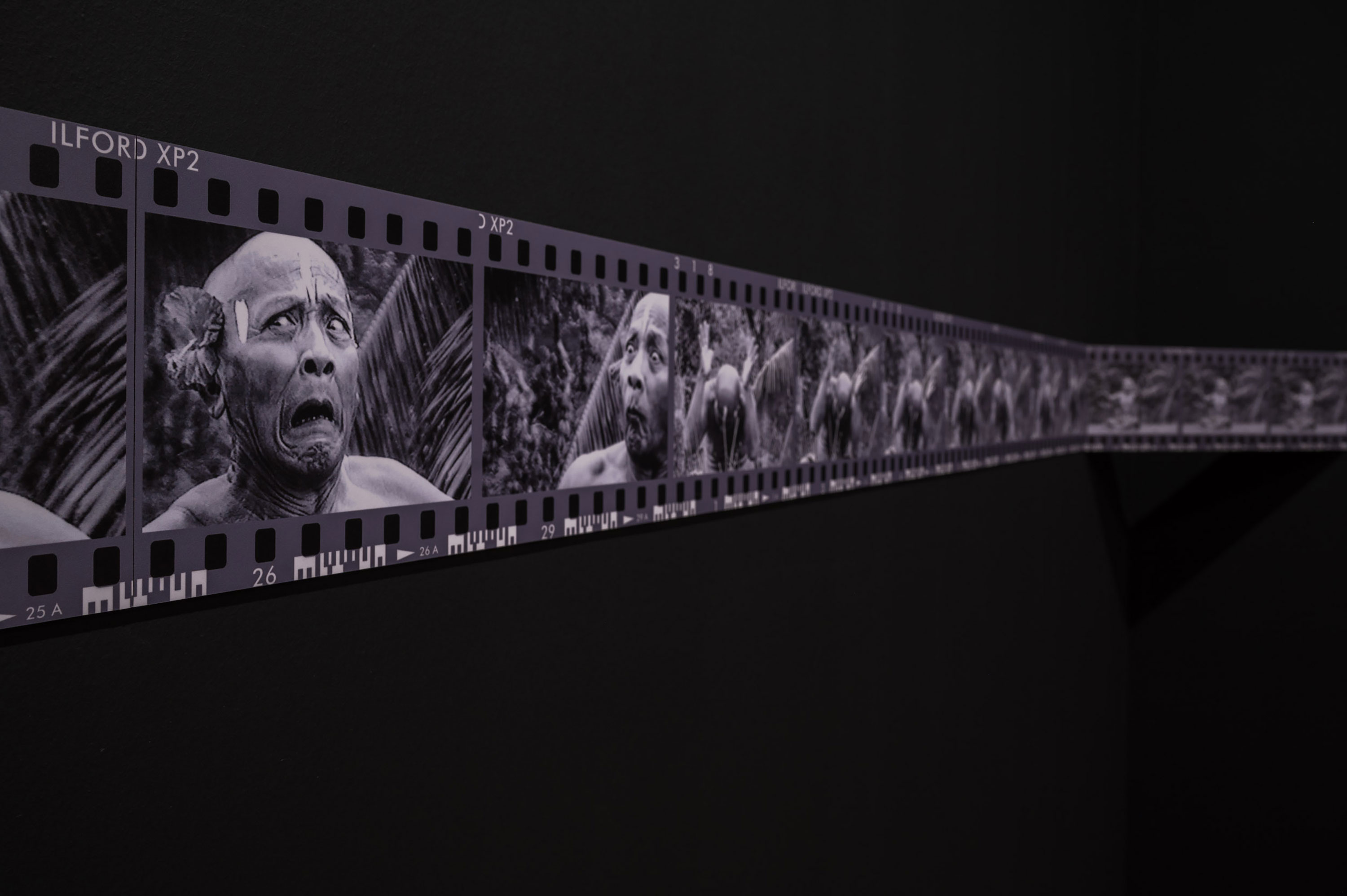
Indonesian artist Krisna Murti created his first major video installation, 12 Hours in the Life of Agung Rai, the Dancer, in 1993 as part of his solo exhibition of the same name.
Krisna Murti. 12 Hours in the Life of Agung Rai, the Dancer. 1993. Installation view, Studio R66, Bandung, Indonesia, 1993. Image courtesy of the artist Ⓒ Krisna Murti
About the Artwork
12 Jam dalam Kehidupan Penari Agung Rai (12 Hours in the Life of Agung Rai, the Dancer)
1993, remade 2014/2023
Two cathode-ray tube televisions, flat screen television, tree branches, dried leaves, 98 inkjet prints on acrylic, video
4 videos: three channels, each 4:3 aspect ratio, colour and sound (stereo), varying durations totalling 4 hours 50 min 10 sec
Collection of National Gallery Singapore
2015-00381
Preceding this work were smaller exploratory studies presenting video in an installative manner. The work explores how traditions can be represented through technological tools and local natural materials. Being half-Balinese, Murti spent a considerable amount of time in Bali, Indonesia. While there, he became captivated by local Kecak dancer Agung Rai. To Murti, Agung Rai is a living symbol of Bali’s heritage, steadfast in his values and simple lifestyle amidst changes brought about by modern technology. Yet, the dance Agung Rai so adeptly performs has a complex history.
Local Balinese and Western expatriates co-created the Kecak dance in the 1930s, primarily for tourist consumption, demonstrating the complicated nature of tradition and its forms of representation. To create this video work, Murti documented Agung Rai’s daily routines, using an 8mm camcorder, tape recorder and photographic cameras. He captured Agung Rai over several hours, from daytime to evening. While Agung Rai performed for the stage and for the camera at times, the video also portrays his life and community beyond his performative self. It shows Agung Rai eating, working in the fields, sitting and talking with friends. The title of the work flashes briefly at the start of the video, but Murti refrains from adding special video editing effects, allowing the documentation to speak for itself. By showing a more intimate and even mundane reality, Murti asserts the performer’s humanity and the importance of representing Agung Rai beyond ritualised performances of “tradition.”
Krisna Murti. 12 Hours in the Life of Agung Rai, the Dancer. 1993. Installation view, Studio R66, Bandung, Indonesia, 1993. Image courtesy of the artist Ⓒ Krisna Murti
The installation should adapt and draw materials from the environment of the place of exhibition.
In the installation, televisions playing the videos are embedded within organic material to orient them differently. This act positions them as devices of creative potential, recontextualising the television monitors typically encountered in domestic settings. Around the room, sequential photographs of Agung Rai stretch across the width of the different walls. They spatially demonstrate his movement and expression over time.
According to the artist, the installation should adapt and draw materials from the environment of the place of exhibition. The first iteration of the artwork in 1993 featured rice husks, an organic material readily available in Indonesia. It was also staged with rice husks during its second exhibition in 2015 as part of National Gallery Singapore’s inaugural show, Between Declarations and Dreams: Art of Southeast Asia since the 19th Century. For its 2023 iteration, the Gallery used dried leaves found in Singapore as suggested by the artist. These natural materials are set in contrast to the video as a technological element of the installation and exemplify Murti’s site-specific approach to installation.
According to a caption in Murti’s book Video Publik, Agung Rai himself attended the opening of the work’s first exhibition in Studio R-66, Bandung, Indonesia. The audience, as stated in the caption, “could actually hold a dialogue, dance together, and thoroughly touch Agung Rai’s muscles.” His presence provided another layer of liveness and immediacy to his video image and his many photographic selves. The artist recreated the components of the work in 2014 for National Gallery Singapore’s acquisition of the work. While the video, in four parts, originates from the 1993 work, segments of it were lost.
Video documentation of Krisna Murti’s first video solo show, Studio R66, Bandung, Indonesia, 1993. From the artist’s YouTube channel.
About the Artist
Krisna Murti (b. 1957, Indonesia; d. 2023, Indonesia) was a pioneer of Indonesian video art who began producing video installations in the 1990s. He was known for works that explored the impact of digitalisation on culture and society. He graduated from the Institut Teknologi Bandung (ITB) Faculty of Fine Art and Design in 1981. Murti held solo and group exhibitions in Indonesia and internationally, in Australia, Cuba, Germany, Japan, the Netherlands, Russia and Singapore. He was also featured in numerous festivals such as Impakt, European Media Art Festival (EMAF), Gwangju Biennale, Venice Biennale and Havana Biennial.
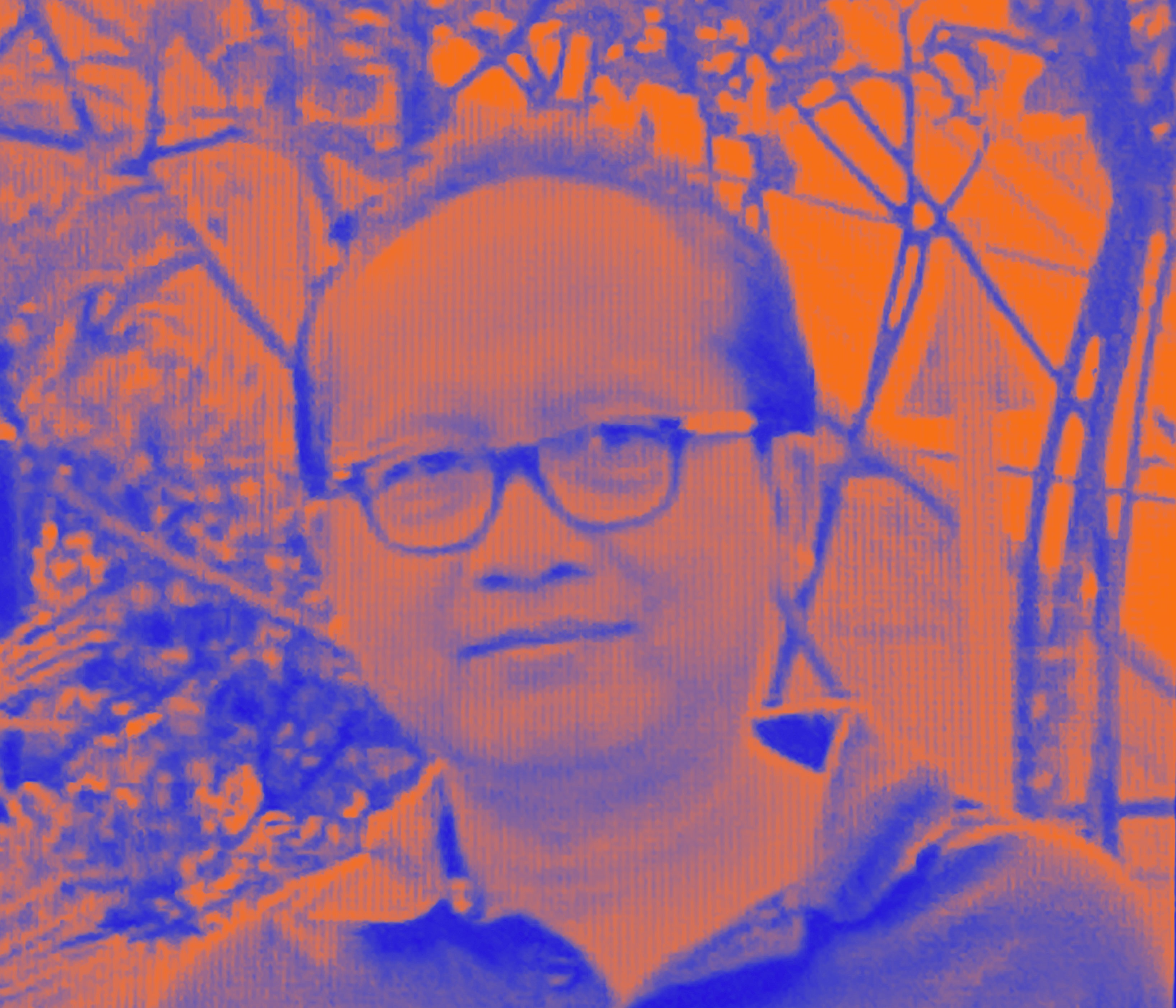
Image courtesy of Krisna Murti
Installation View
Discover More Details
Murti’s prolonged documentation of Agung Rai shows the performer’s humanity and the intimate and even mundane reality of his everyday life. Every iteration of the artwork is also site-specific in terms of material.
